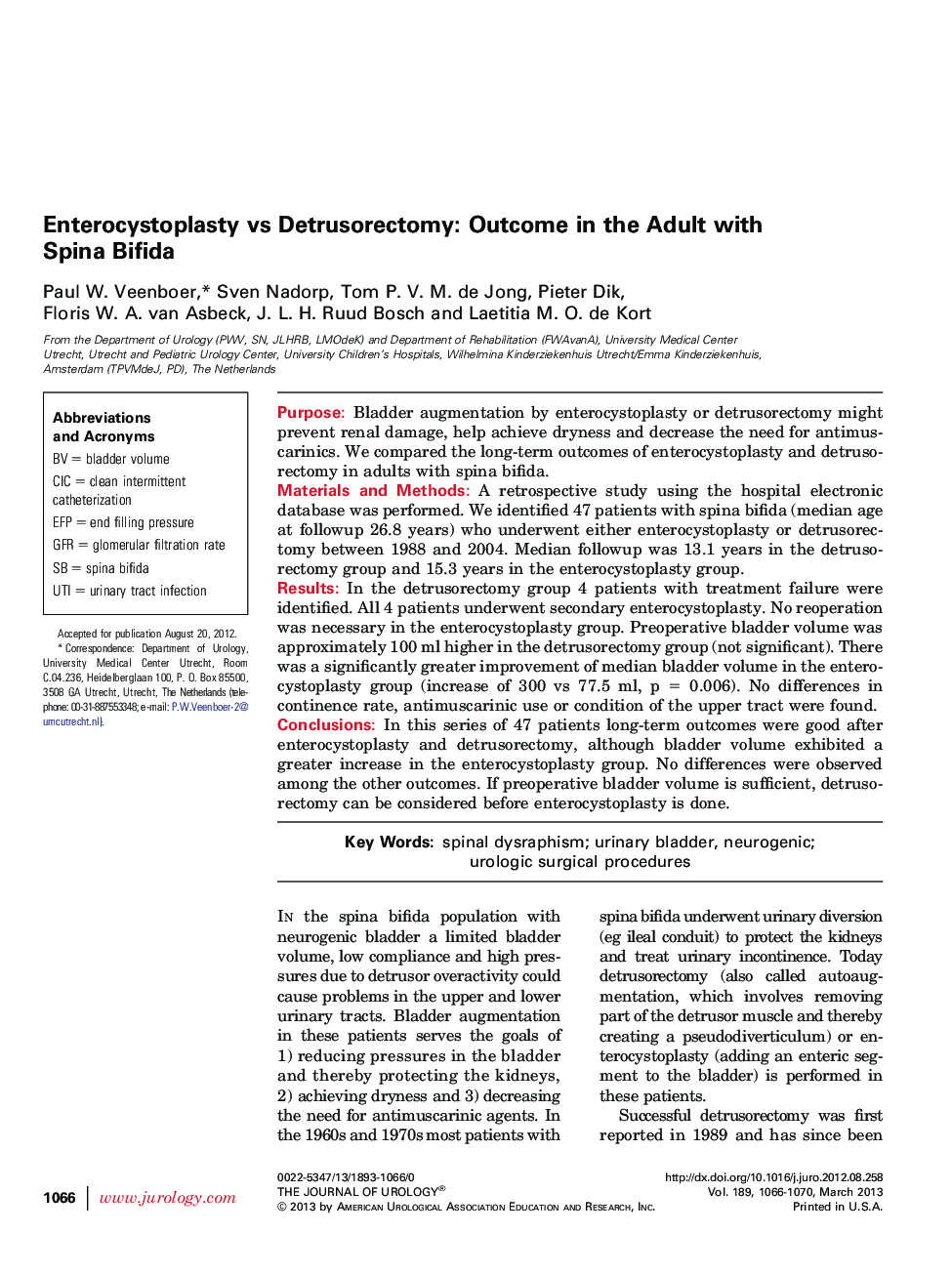| Article ID | Journal | Published Year | Pages | File Type |
|---|---|---|---|---|
| 3864976 | The Journal of Urology | 2013 | 5 Pages |
PurposeBladder augmentation by enterocystoplasty or detrusorectomy might prevent renal damage, help achieve dryness and decrease the need for antimuscarinics. We compared the long-term outcomes of enterocystoplasty and detrusorectomy in adults with spina bifida.Materials and MethodsA retrospective study using the hospital electronic database was performed. We identified 47 patients with spina bifida (median age at followup 26.8 years) who underwent either enterocystoplasty or detrusorectomy between 1988 and 2004. Median followup was 13.1 years in the detrusorectomy group and 15.3 years in the enterocystoplasty group.ResultsIn the detrusorectomy group 4 patients with treatment failure were identified. All 4 patients underwent secondary enterocystoplasty. No reoperation was necessary in the enterocystoplasty group. Preoperative bladder volume was approximately 100 ml higher in the detrusorectomy group (not significant). There was a significantly greater improvement of median bladder volume in the enterocystoplasty group (increase of 300 vs 77.5 ml, p = 0.006). No differences in continence rate, antimuscarinic use or condition of the upper tract were found.ConclusionsIn this series of 47 patients long-term outcomes were good after enterocystoplasty and detrusorectomy, although bladder volume exhibited a greater increase in the enterocystoplasty group. No differences were observed among the other outcomes. If preoperative bladder volume is sufficient, detrusorectomy can be considered before enterocystoplasty is done.
